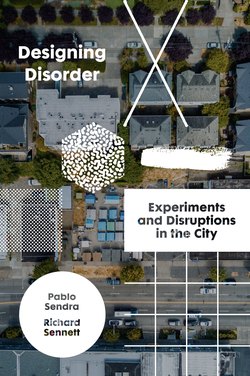Читать книгу Designing Disorder - Richard Sennett - Страница 6
На сайте Литреса книга снята с продажи.
ОглавлениеIntroduction
Pablo Sendra and Richard Sennett
Rigid, overdetermined forms are smothering the modern city. These unyielding environments suppress people’s freedom to act, stifle informal social relations, and inhibit the city’s power to grow. In this book, we propose an alternative, underdetermined form of city-making, one which disrupts rigid forms, putting in their place more life-enhancing designs.
Evidence of overdetermined form now dominates Manhattan’s skyline. Located at the north end of the High Line, Hudson Yards represents the commercially driven urbanism that has transformed cities like New York and London. Hudson Yards is an assemblage of luxury condominiums and rentals, a hotel, offices, restaurants and a shopping mall offering the most expensive brands. In its centre is the Vessel, a sculptural staircase designed less for use than as a picture frame for commercial promotions.1 The square is delimited in its south part by the ‘Shed’, a gigantic movable structure that aims to become a flexible arts venue for big-ticket performances. This enormous development neither encourages local activities by ordinary citizens, nor can its fixed forms evolve; it can only degrade.
In contrast, Hudson Yards is bordered on its east side by the Garment District, a vibrant, diverse community with small as well as large businesses, mixing relatively recent Korean immigrants with other established immigrant communities, combining housing for working- and middle-class people with schools and churches. This complex, often noisy and unruly community has been able to evolve and prosper over the last century and a half.
Figure 1: Global capital imposing order. Hudson Yards, New York City. In the image: the shopping mall (right), the Shed (left), the Vessel (centre-back) and the skyscrapers. March 2019.
In this book we want to show how such a community can be designed – that is, what kind of basic forms, what kind of urban DNA, allows a place to grow.
This book builds on the work of one of the authors, Richard Sennett. In 1970, when The Uses of Disorder was published, the reasons Richard saw behind the ‘overlap of so many different kinds of life’2 in the Garment District was that none of the different parts of Manhattan’s lower midtown had sufficient power to build its own limits.3 The author also warned that ‘abundance’ was erasing this vitality from city life, both by creating boundaries and by eliminating the need to share resources with people around you. Hudson Yards is a manifestation of the effect which The Uses of Disorder warned that a concentration of wealth and power could have on the city. It epitomises New York’s transformation into a real estate-driven city.4 If The Uses of Disorder saw modernist developments as impositions of order that were erasing city life, today the forms of order imposed come from a globalised real estate industry.
A vital and open city does not occur naturally. There are places where improvised activities and social interaction do not happen because the rigidity of the urban environment does not allow this improvisation to take place, and planning for disorder is necessary. When architect Pablo Sendra read The Uses of Disorder, he decided to explore which urban design interventions could enable the kinds of disorder that allow for unplanned activities and provide an open-ended urban configuration that can change according to people’s actions. This book proposes urban design experiments for those places where spontaneous activities and social interactions do not occur. It does not propose design strategies for places where informality and sociability are already happening, but it rather explores disruptions in urban design that can dismantle overly rigid environments.
This collaboration between architect Pablo Sendra and sociologist Richard Sennett revisits The Uses of Disorder ideas of a ‘disordered, unstable, direct social life’5 and turns them into urban design experiments that put them into practice. In the first part of the book, Richard Sennett reflects on the context which led him to write The Uses of Disorder and on its meaning today. Richard then explains his proposal for an Open City, which can release the rigidity of prescriptive environments. In the second part of the book, Pablo Sendra proposes urban design experiments which disrupt overly ordered urban environments, encourage the unplanned use of public space and provoke social interaction. Pablo’s piece is not a prescriptive manual; rather, it encompasses suggestions for how design can become more open-ended in scope and more collective in practice. The third part of the book is a discussion between Pablo Sendra and Richard Sennett, moderated by editor Leo Hollis, in which they reflect on the implications of The Uses of Disorder today.
